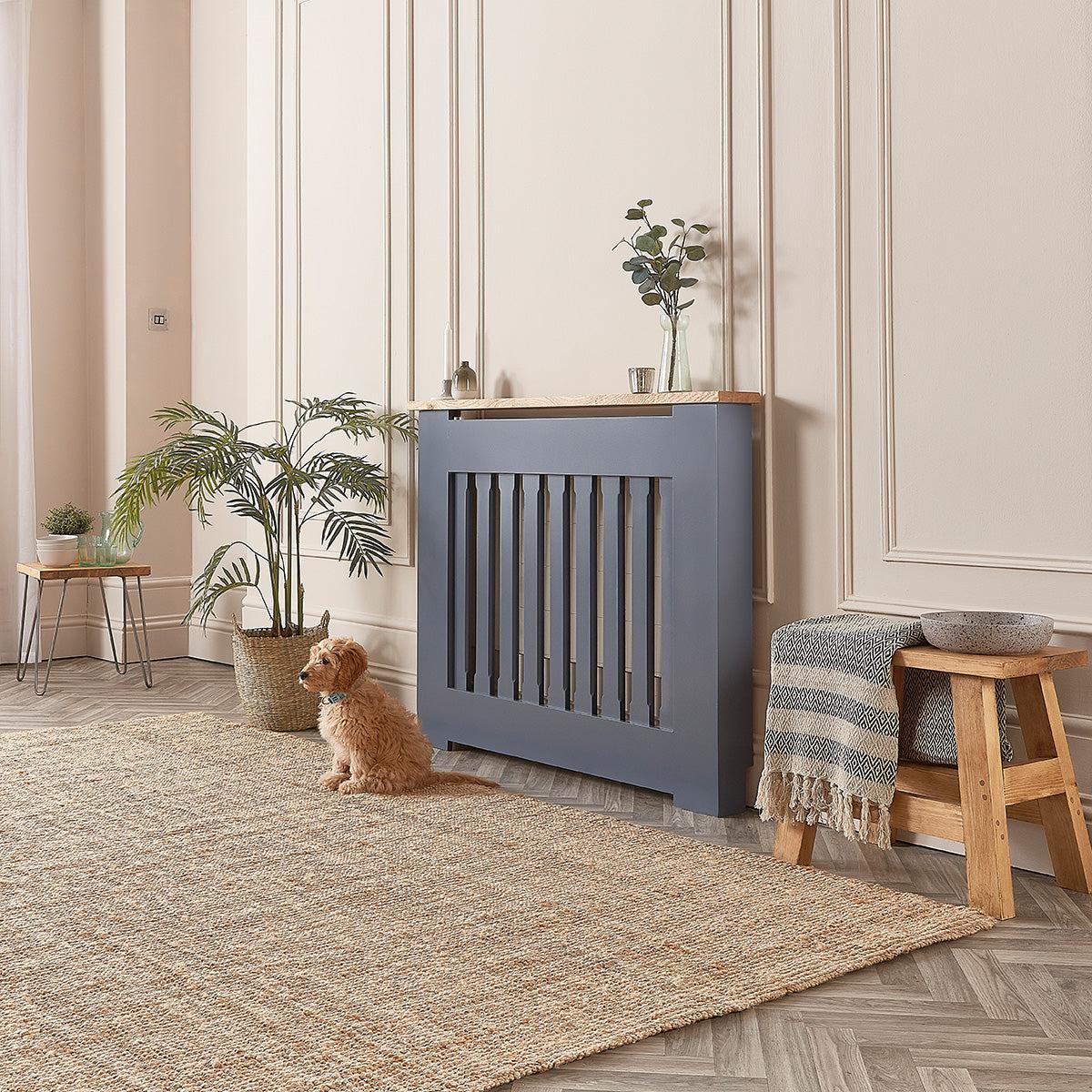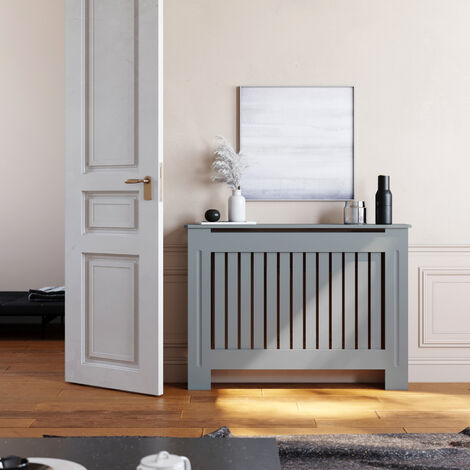DIY Tips for Installing a Radiator Cover easily
DIY Tips for Installing a Radiator Cover easily
Blog Article
Radiator Covers: Understanding Materials, Designs, and Benefits
Radiator covers offer both aesthetic and functional objectives within a home, supplying an array of products such as mdf, steel, and wood to fit various design preferences. As designs evolveâEUR" from conventional to contemporaryâEUR" these covers not only enhance the visual appeal of a space yet likewise contribute to safety and security and energy efficiency. Choosing the appropriate radiator cover involves understanding the subtleties of materials, layouts, and their connected advantages. This exploration elevates critical inquiries about just how these components incorporate right into your living environment and what factors to consider should lead your choice procedure.
Types of Materials


Wooden covers, often crafted from hardwoods such as oak or maple, give a classic, cozy look that complements conventional insides. Their toughness and ability to be stained or repainted add to their flexibility. Metal covers, commonly made from steel or aluminum, are favored for their toughness and modern-day appearance, frequently featuring smooth lines that boost modern spaces.
MDF, a manufactured wood product, is prominent for its cost-effectiveness and convenience of modification. It can be repainted or ended up to match existing decor while providing a smooth surface. Plastic covers, while much less typical, are light-weight and immune to dampness, making them ideal for moist atmospheres.
Inevitably, the selection of product for a radiator cover need to straighten with the home owner's style choices, practical demands, and the certain setting where the cover will be installed. Each material offers a distinct character, ensuring that there is an option to match every preference and setup.
Popular Style Styles
Highlighting visual allure, prominent style styles for radiator covers reflect a series of tastes and indoor layout patterns. Standard styles commonly include elaborate woodwork and ornate describing, making them appropriate for vintage-inspired or timeless insides. These covers typically incorporate carved components, offering a warm and inviting feeling to any area.
In comparison, contemporary designs concentrate on minimalist appearances, characterized by tidy lines and downplayed beauty. Materials such as steel or streamlined timber with a smooth coating are frequently utilized, enabling these covers to blend flawlessly right into modern rooms. Industrial styles, on the various other hand, accept resources like revealed metal and concrete, including a strong declaration to loft or city settings.
For those looking for a special touch, bespoke designs provide customization choices that accommodate individual preferences, allowing homeowners to choose shades, patterns, and products that complement their decoration. Additionally, farmhouse-style covers integrate rustic components, featuring distressed wood and basic kinds that evoke a comfortable, nation beauty.
Advantages of Radiator Covers
Radiator covers not only improve the visual allure of a room however additionally offer a number of sensible advantages that make them a worthwhile addition to any type of home. Among the key advantages is safety, particularly in households with family pets or children. Covers reduce the risk of burns from hot radiator surfaces, making sure a much safer environment.
Furthermore, radiator covers can enhance energy effectiveness. By guiding warm into the space rather than enabling it to leave, they assist preserve a regular temperature, reducing heating costs over time. great post to read This is specifically advantageous in older homes where radiator systems may be much less reliable.
An additional remarkable advantage is noise decrease. Radiators can in some cases generate undesirable noises during operation, and covers can aid smother these sounds, adding to a more tranquil space. Radiator covers can be useful, supplying additional storage space or display screen room, thus maximizing the energy of often-overlooked areas.
Last but not least, they can secure radiators from dust and particles, which can impede efficiency and rise upkeep needs. With these incorporated benefits, radiator covers emerge as a sensible option for enhancing both the capability and style of any home setting.
Setup Factors To Consider
Setting up radiator covers requires mindful factor to consider to guarantee both capability and safety (Radiator cover). Analyze the dimensions of your radiator and the surrounding area to ensure an appropriate fit. Exact measurements are critical; an ill-fitting cover can block heat circulation or develop security threats
Next, examine the product of the cover. While wood provides aesthetic appeal, metal options might supply much better resilience and heat resistance. Think about the weight of the cover too; heavier covers might require added support or supports to avoid sagging or damage gradually.
Air flow is an additional crucial element. Covers need to feature appropriate air movement to protect against overheating and maintain effective heating. Try to important site find layouts with slats or openings that permit warmth to circulate without obstruction.
Additionally, make sure that the cover is safely installed to avoid crashes, especially in homes with animals or kids. Radiator cover. It's recommended to comply with the maker's installment standards closely and, if required, speak with an expert for complex installations
Maintenance and Treatment Tips
Correct upkeep of radiator covers is crucial for guaranteeing their durability and ideal performance. Regular cleaning is vital; dust and debris can build up, obstructing airflow and reducing warmth performance. Utilize a soft, damp towel or a microfiber duster to delicately clean the surface area, preventing harsh chemicals that might harm navigate to this site the finish. For repainted or timber covers, think about a suitable gloss or protective covering to keep their appearance.
Inspect the covers occasionally for indications of wear or damages, such as fractures or peeling off paint. Resolving these issues without delay can stop further degeneration. Ensure that the covers are firmly fastened and look for any loosened screws or fittings, as resonances from the radiator can loosen them over time.
In chillier months, stay clear of putting hefty objects or attractive items on top of the radiator covers, as this can restrain heat circulation and cause unnecessary stress and anxiety to the structure. Last but not least, consider seasonal upkeep by getting rid of the covers for complete cleaning and assessment throughout warmer months when the heating unit is inactive. Adopting these easy treatment pointers will enhance the performance and visual appeal of your radiator covers, ensuring they serve their function effectively for years to find.

Conclusion
In recap, radiator covers serve as visual and practical improvements to residential areas. Mindful consideration of setup and upkeep more ensures the longevity and efficiency of radiator covers in any kind of home setting.
Radiator covers serve both aesthetic and functional purposes within a home, using an array of products such as wood, steel, and MDF to fit numerous layout choices. Picking the appropriate radiator cover involves understanding the nuances of materials, designs, and their associated benefits.Emphasizing visual appeal, popular layout styles for radiator covers mirror an array of preferences and indoor layout fads.Radiator covers not just improve the aesthetic charm of a space but also offer several practical advantages that make them a rewarding enhancement to any type of home. Take into consideration the weight of the cover as well; much heavier covers might need extra support or supports to stay clear of drooping or damage over time.
Report this page